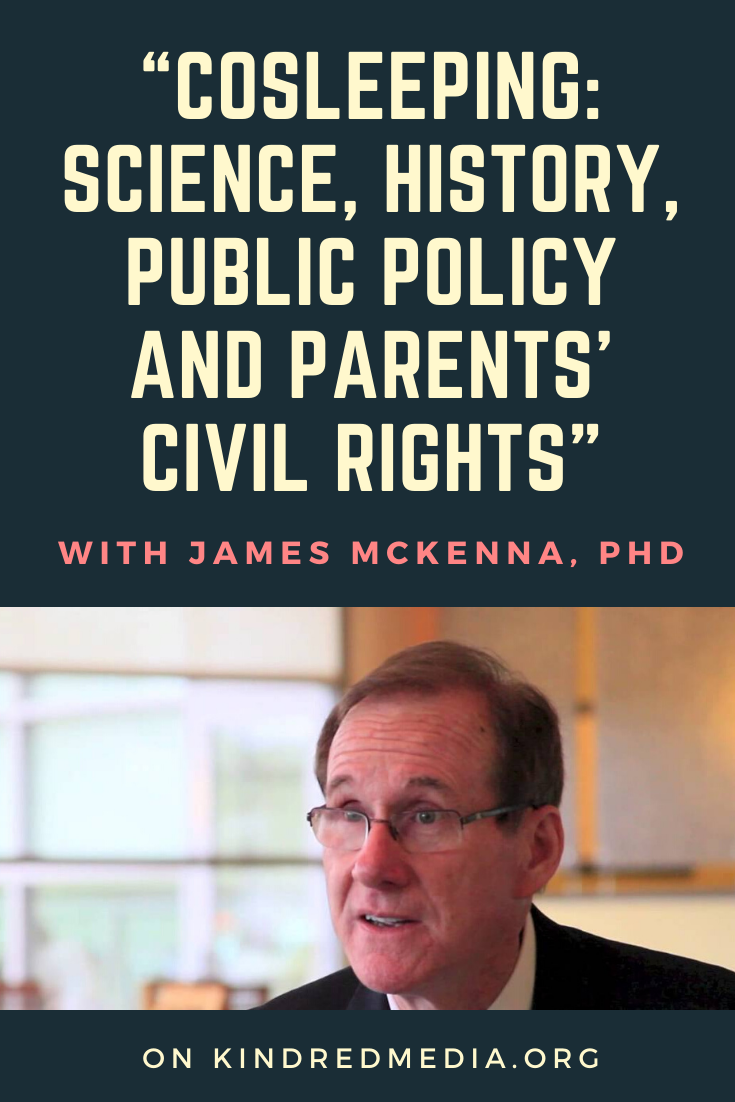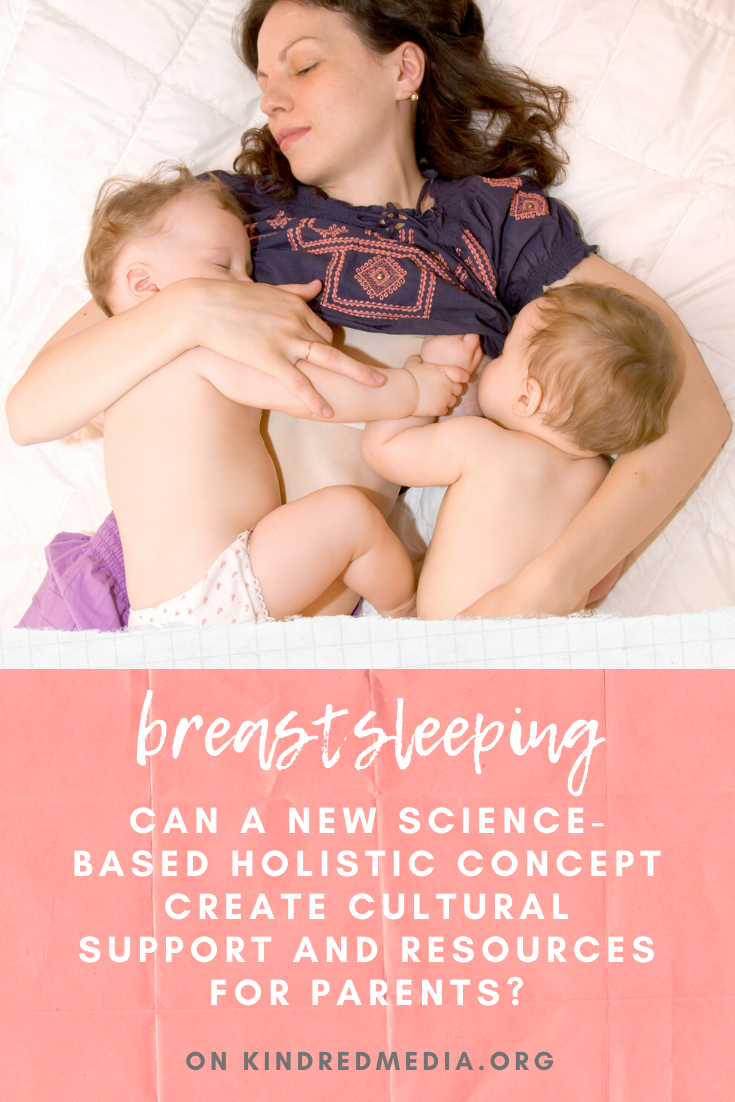Safe Infant Sleep and Breastfeeding Are Partners
Infant sleep is widely misunderstood in Western society.
KEY POINTS
- Mother-baby sleep research has been going on for over 30 years.
- “Breastsleeping”—a combination of co-sleeping and breastfeeding— is our species’ heritage.
- With more mothers breastfeeding than in decades past, safe bed-sharing is increasing.
Infant sleep Is misunderstood by most Americans. For example, like all social mammals, humans evolved to co-sleep with others. Most of humanity today, and throughout our six-million-year history, co-sleeps with others throughout life, including during infancy. During infancy it accompanies extensive, on-request breastfeeding.

However, breastfeeding and infant sleep have been considered separate elements for some time in Western and Westernized countries. After a shift to artificial infant food in the 20th century, more mothers today are turning to breastfeeding. Still, there are numerous misunderstandings among parents and their medical advisors. The American Academy of Pediatrics only in 2016 began to advocate room sharing.
A recent paper by three anthropologists reviews what is known about infant sleep and breastfeeding (Ball, Tomori & McKenna, 2019).
What do mother-baby sleep experiments tell us?
- Research shows that co-sleeping with infants facilitates breastfeeding, the species-normal way of feeding young infants.
- With solitary infant sleep, infants often sleep more deeply than when co-sleeping. This can be dangerous for a young baby, who otherwise sleeps lightly, waking frequently to breastfeed. It takes young infants months to learn to breathe and self-regulate outside the womb, and they can succumb to sleep apnea without the presence of mother (McKenna, 2020).
- Around three months of age, infants undergo dramatic changes in their breathing control that make them vulnerable to unpredictable breathing cessation (Mosko, Richard, & McKenna, 1997a). Maternal presence is linked to the stimulation needed to restore breathing.
- Mother and child mutually co-regulate when co-sleeping. Feeding frequency at night (as well as during the day) increases milk production.
- Mother’s night milk, which contains melatonin, facilitates the development of the circadian rhythm in the infant during the first months of life, before the infant is able to produce their own melatonin.
- Challenging births, such as those requiring C-sections, create difficulties to the degree that investment in breastfeeding is diminished.
- Birth interventions pose challenges to breastfeeding even when mother and child sleep in proximity.
- Infants who sleep alone sleep less overall.
Cultural Differences
Adults often believe they sleep through the night and so should infants. But both of these ideas are recent cultural notions. Research in non-electrified communities indicates that there are two distinct sleep periods, each about four hours. People wake up periodically throughout the night and adult sleep does not synchronize.
The Ball et al. (2019) paper reviews the history of “sleep problems” in Western societies. These emerged from industrialization, capitalism, biomedicalization of sleep (i.e., pharmaceuticals), and the valuing of solitary infant sleep for “safety.” The use of sleep training for separate infant sleep by middle-class Euro-Americans is a recent cultural construction representing a tiny minority of the world’s population.
The sleep practices of various cultures have been well studied. Most mothers from nonindustrialized cultures are not worried about infant sleep. The colonization of Western values often fails in indigenous societies that have longstanding understanding of infant safety through proximity to mother. Immigration of traditional Indigenous families into a culture that gives directives about separate infant sleep for prevention of Sudden Infant Death Syndrome (SIDS) makes no sense to such families because they had never heard of or experienced SIDS. Instead, they considered proximity to infants a priority. Even in Japan’s traditions, co-sleeping is considered central to child-raising because it provides safety, facilitates caregiving such as breastfeeding, and ensures the child’s well-being (Tahhan, 2013, 2014).
“Breastsleeping”
“Breastsleeping” describes the combination of breastfeeding and co-sleeping in a safe manner, which breastfeeding moms are most likely to do. It is considered an evolutionary adaptation that does not disrupt maternal sleep and facilitates infant health (Mckenna & Gettler, 2016). Interestingly, because of the cultural stigmatization of breastleeping due to a history of artificial feeding and cultural norms of solitary infant sleep in recent decades, parents today often accidentally rediscover the convenience and ease of breastsleeping. But they tend to keep it a secret from their medical providers and even other family members.
Sudden Infant Death Syndrome (SIDS)
One of the perceived drawbacks of co-sleeping and bed-sharing is the fear of SiDS. There is considerable misinformation here also. Research consistently shows that breastfeeding lowers the risk of SIDS in comparison to artificial feeding.
Instead, other factors increase the risk of SIDS and fatal accidents (Blair et al., 2020):
- Never initiating breastfeeding
- Infant sleeping next to an adult who is impaired by alcohol or drugs
- Infant sleeping next to an adult who smokes
- Sharing a chair with a sleeping adult
- Sharing a sofa with a sleeping adult (‘‘sofa-sharing’’)
- Sleeping on soft bedding
- Being born preterm or of low birth weight
- Sleeping in the prone position.
Conclusion
Ball et al. (2019) conclude that a change in policy recommendations is urgently needed:
“The mismatch between Western cultural family sleep expectations and the biological constraints of human babies exacerbates inequalities in infant development, undermines parental resilience, and compromises family well-being.”
For more research and advice on scientifically-guided safe co-sleeping and bed-sharing, go to cosleeping.nd.edu.
KINDRED RESOURCES
VIDEOS
Watch the full Kindred interview series with Dr. McKenna in our video playlist on YouTube here.
The series includes breakout topics of the full interview above, including:
How Science and History Support You Sleeping With Your Baby
Co-Sleeping: Public Policy, Science, and Parents’ Civil Rights
Defining Co-Sleeping for Parents, Practitioners, Scientists and Public Policy Makers
BOOKS
Read the introduction to Dr. McKenna’s book, Safe Infant Sleep, here.
POSTS
BreastSLEEPING: Can A New Science-Based Holistic Concept Create Cultural Support And Resources For Parents? A podcast interview with James McKenna, PhD
Safe Infant Sleep: Expert Answers To Your Cosleeping Questions, A New Book – The Introduction to Safe Infant Sleep, by James McKenna, PhD
Researchers Propose “BREASTSLEEPING” As New Term And Concept
Cosleeping And Biological Imperatives: Why Human Babies Do Not And Should Not Sleep Alone
New Survey Shows Cosleeping Families Double In Past Decade; Is Backlash Inevitable?
SCIENCE LAB
For more information on co-sleeping, including a complete inventory of FAQs and articles, visit Dr. McKenna at the Mother-Baby Sleep Behaviorial Laboratory, University of Notre Dame, at http://www.cosleeping.nd.edu
MORE
Find more about infant sleep, co-sleeping, bedspring, and breastsleeping on Kindred here.
Post References
Ball, H. L. 2013. “Supporting Parents Who Are Worried about Their Newborn’s Sleep.” British Medical Journal 346 (4): f2344. https://doi.org/10.1136/bmj.f2344.
Ball, H., Tomori, C., & McKenna, J. (2019). Toward an integrated anthropology of infant sleep. American Anthropologist.
McKenna, J.J. (2020). Safe infant sleep. Platypus.
McKenna, J. J., and L. T. Gettler. 2016. “There Is No Such Thing as Infant Sleep, There Is No Such Thing as Breastfeeding, There Is Only Breastsleeping.” Acta Paediatrica 105 (1): 17–21. https://doi.org/10.1111/apa.13161.
Marinelli, K.A., Ball, H.L., McKenna, J.J., & Blair, P.S. (2019). An integrated analysis of maternal-infant sleep, breastfeeding, and Sudden Infant Death Syndrome research supporting a balanced discourse. Journal of Human Lactation, 1-11.
Mosko, S., Richard, C., & McKenna, J. (1997a). Infant arousals during mother-infant bed sharing: Implications for infant sleep and sudden infant death syndrome research. Pediatrics, 100(5), 841–9.
Tahhan, D. 2013. “Sensuous Connections in Sleep: Feelings of Security and Interdependency in Japanese Sleep Rituals.” In Sleep around the World: Anthropological Perspectives, edited by K. Glaskin and R. Chenhill, 61–78. New York: Palgrave Macmillan.
Tahhan, D. 2014. The Japanese Family: Touch, Intimacy and Feeling. Abingdon: Routledge.
Blair, P.S., Ball, H.L., McKenna, J.J., Feldman-Winter, L., Marinelli, K.A., Bartick, M.C., & the Academy of Breastfeeding Medicine. Bedsharing and Breastfeeding: The Academy of Breastfeeding Medicine Protocol #6, Revision 2019. Breastfeeding Medicine, 15 (1), 5-17.references




